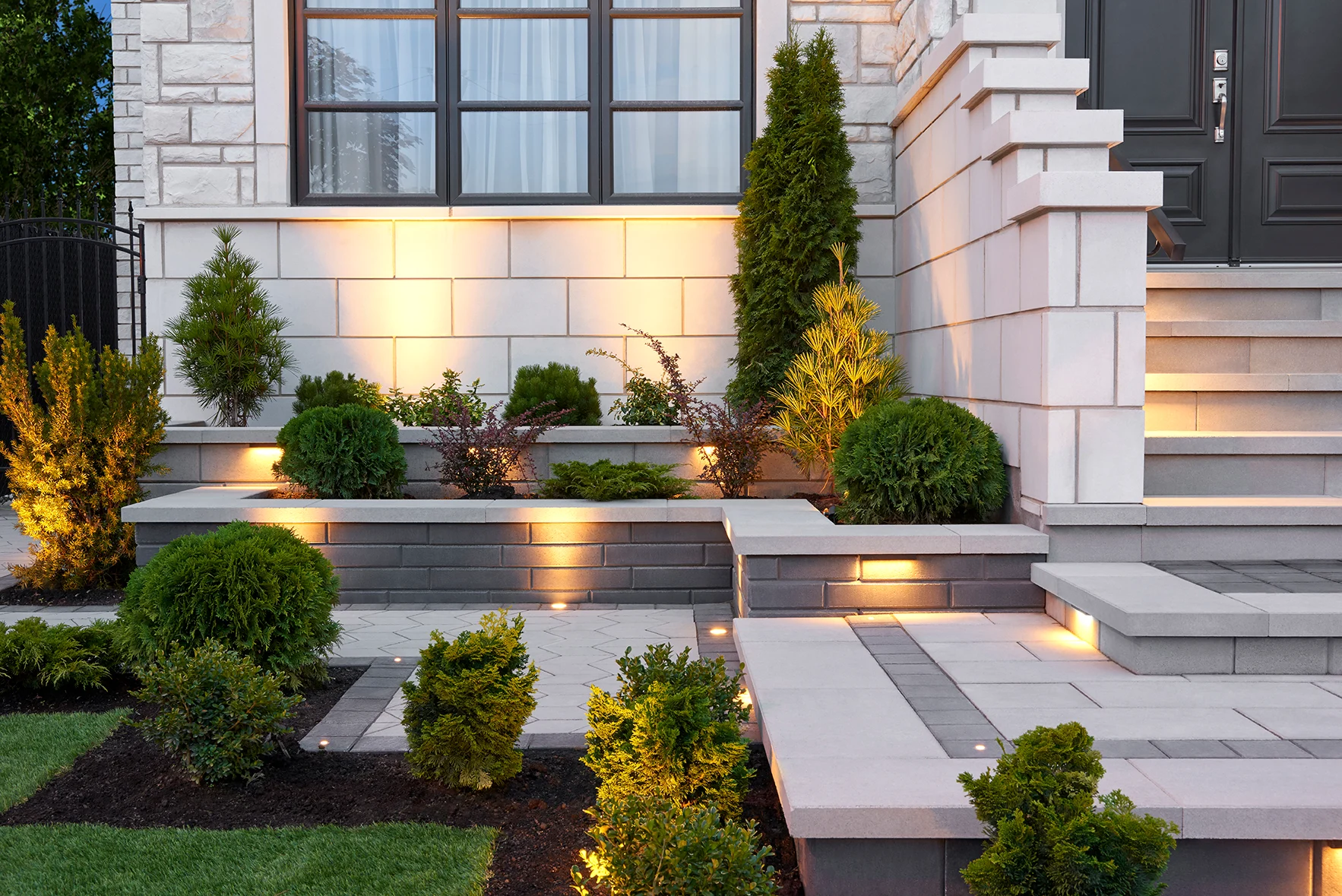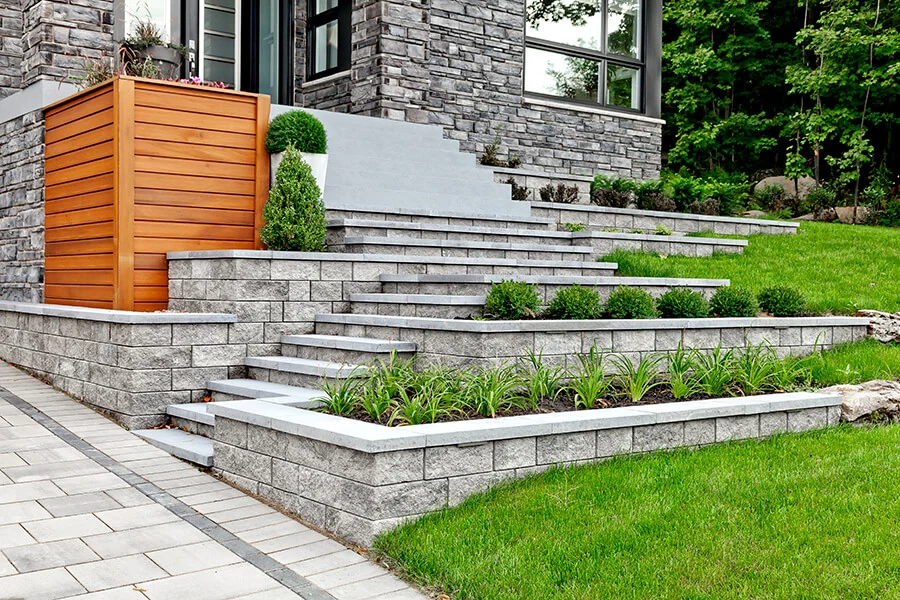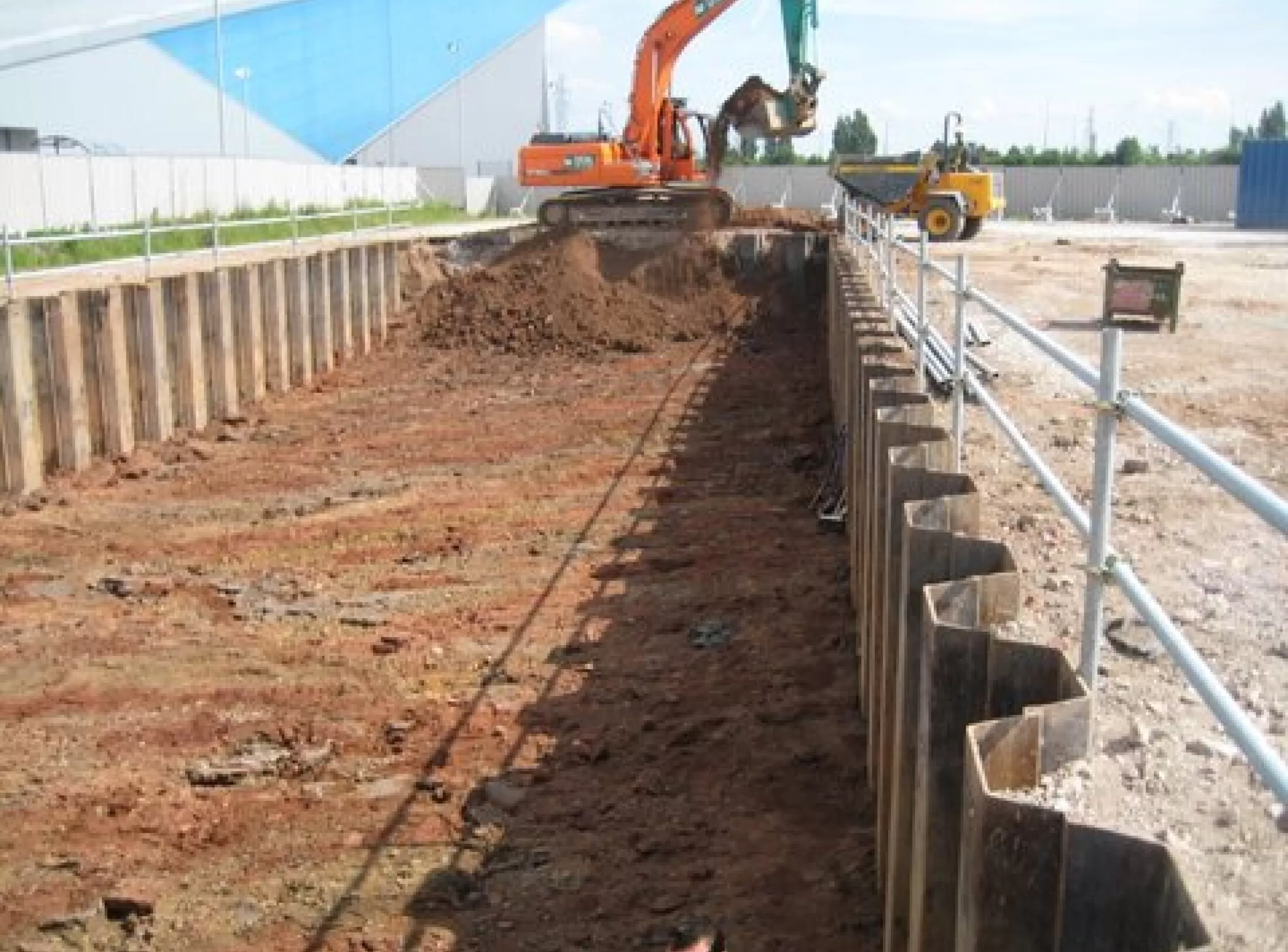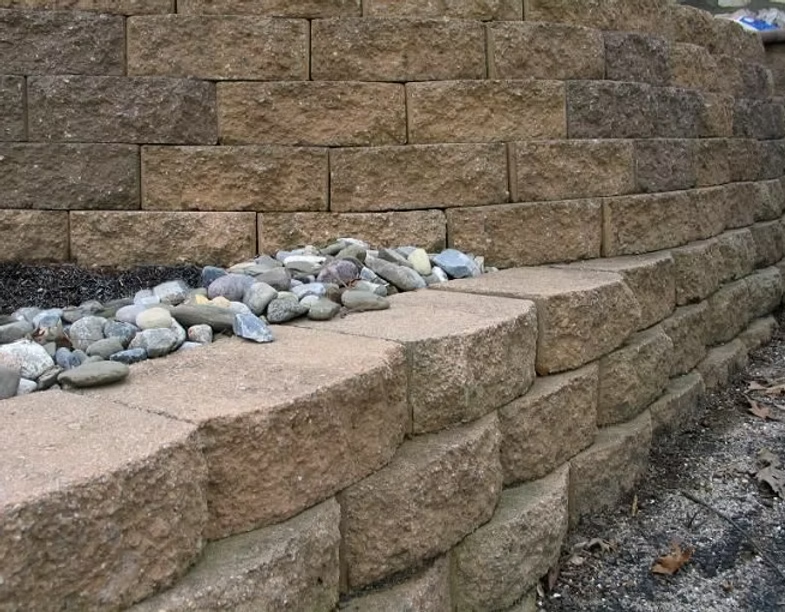LANDSCAPING AND RETAINING WALLS

CUSTOMIZED LANDSCAPING, BUILT TO LAST
At Belvedere, we design and build custom landscapes that reflect your style and enhance your home. With over 50 years of experience and a team of 50+ skilled specialists, we bring your outdoor vision to life—from concept to completion. Our services focus on custom design and expert construction, backed by a guarantee on both labour and materials. Whether you’re dreaming of a serene garden, a bold front yard transformation, or a functional outdoor space, our portfolio showcases our ability to meet a wide range of tastes and needs.
Our services include:
• Patios, Driveways & Walkways
• Pool Design
• Night Lights
• Gravity & Retaining Walls
• Decks & Fences
• Plant Selection & Arrangement
RETAINING WALLS
Retaining walls are an essential part of our landscaping services, providing both structural support and visual impact. They help prevent soil erosion and downslope movement while managing changes in elevation across your property. At Belvedere, we understand that proper design is key—since the soil behind the wall is constantly pushing forward due to gravity.
We offer a wide selection of high-quality Unilock paving stones, allowing your retaining wall to serve as both a functional and eye-catching feature of your outdoor space. Whether you’re looking to enhance curb appeal or solve a grading challenge, our team can design and build a wall that meets your specific needs and complements your home’s aesthetic. All of our work is backed by a guarantee on both labour and materials.
GRAVITY WALLS
Gravity walls depend on the weight of their mass – stone, concrete or other heavy material – to resist pressure from behind and will often have a slight “batter” setback to improve stability by leaning back into the retained soil. For short landscaping walls, they are often made from mortarless stone or segmental concrete units (masonry units). Dry-stacked gravity walls are somewhat flexible and do not require a rigid footing in frost areas.


SHEET PILE WALLS
Ideal for soft soils and tight spaces, sheet pile walls are made from steel, vinyl, or wood planks driven into the ground—typically one-third above and two-thirds below ground. Taller walls may require tie-back anchors (or “dead men”) placed behind the wall and connected with cables or rods for added support.
CANTILEVERED WALLS
Made of steel-reinforced concrete or masonry, cantilevered walls use an inverted T-shape to transfer horizontal pressure into vertical ground pressure via a deep footing. For extra strength, they may include front buttresses or rear counterforts. These walls are efficient and use less material than traditional gravity walls.

THE IMPORTANCE OF DRAINAGE
It is vital to have proper drainage behind the wall, as it is critical to the performance of retaining walls. Drainage materials will reduce or eliminate the hydrostatic pressure and will therefore greatly improve the stability of the material behind the wall, assuming that it is not being used for water.
ESTABLISHING CONNECTIONS
For this particular project, we installed a beautiful interlocking block retaining wall. Interlocking retaining walls connect via a tongue and groove system. They also feature several un-sealed connections that can also be linked together.
Interlocking retaining walls can shift easier than other types of retaining walls. Even though they do not appear damaged, they can still exhibit all of the signs of water seepage. Interlocking retaining wall design is prone to expansive and soft soils, which can cause cracks and shifts in the foundation.

